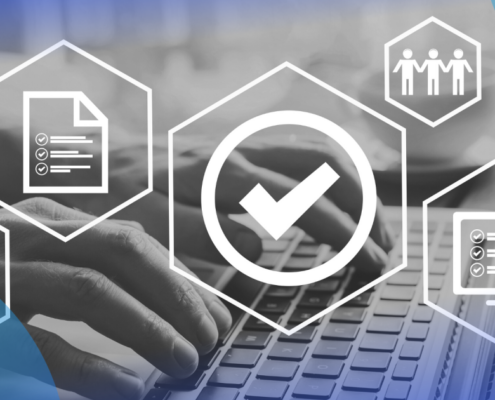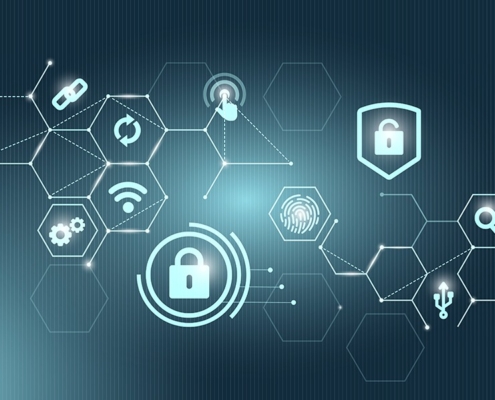
It’s all in the name! It’s a visual map of a customer’s journey throughout interactions with an organization. Walk a mile in your customer’s shoes by seeing what they see while they are engaging with the company. This, of course, allows insight into the customer perspective and pain points to be optimized and solved.
A customer journey is imperative for sales teams and marketing teams to understand their customers to the fullest extent. In the end, it’s more likely you’ll close the sale when you know where your customer is going, what they’re experiencing and what struggles they’re facing What experiences will be factored in?
1. Set Clear Objectives
Before an organization can dive into creating a customer journey map, it must determine what success looks like for its customers and for the organization. What goal is the map trying to achieve? What customer is it specifically about and will your team need to create multiple maps for multiple audiences? What experiences will be factored in? It’s easier to navigate a map when the destination is already predetermined.
2. Create a Persona Profile
A buyer persona should be implemented shortly after objectives have been outlined. A persona is a fictitious customer with all of an average customer’s demographics and psychographic represented. Having a clear persona is helpful, and it is a great reminder to direct every aspect of the customer journey map towards a real potential customer. The cleaner a defined persona is, the more helpful it will be to construct the customer journey map. Don’t forget to use market research and the data you’ve collected.
If you are unable to conduct in-depth market research, don’t panic! Asking for feedback from potential, current, and past customers is a great way to gain customer insights without breaking your budget.
3. Identify Motivations and Pain Points
There are a few questions to ask when trying to understand customer motivation. Why did the customer seek out your organization? What are the goals they’re trying to achieve? Once these foundational questions are answered, you can begin to solve the customer’s pain points. This strategy will help your team ensure your customers get through the journey without stopping halfway through. If they don’t make it through, they may ultimately consider a different brand altogether. There are three key areas to prioritize:
• Finding your customer’s pain point
• Earning their trust
• Solving the pain point for them
A great example of finding a customer’s pain point is a buyer that isn’t tech-savvy wanting to purchase a product. How does your website help someone who isn’t tech-savvy? If your site isn’t user-friendly, are there chatbots or customer service employees standing by to earn trust and eliminate this pain point? A few questions to ask yourself as you identify pain points and motivations are: What keeps your buyer interacting with your organization? What’s stopping them from reaching their goals? Are they hesitant to move forward? If so, why?
A customer journey is an essential visual map of a customer’s journey throughout interactions with an organization.
4. Touchpoints
Customer touchpoints help marketing and sales initiatives across multiple businesses and industries. A customer touchpoint is any situation where a present, past, or potential customer interacts with your brand. In the past, brands have been able to make the first touchpoint with customers at the beginning of their journey. However, in today’s digital world, the first contact won’t always be at the beginning of the journey.
There are three main ways a customer will receive a touchpoint. First, a customer that is in a prior-to-purchase stage will likely interact with your brand differently. This customer may take the time to review social media posts, landing pages, advertisements, or blog posts. On the contrary, a customer that is in the purchase stage may view a company website, physical store, product package, or maybe a salesman bio. Lastly, a customer who has already purchased a product or service may receive a touchpoint in the form of feedback surveys, newsletters, thank you correspondence, or billing documents. Remember, touchpoints are just as important as the sale itself; the opportunity to make the right impression only happens once!
5. Map out The Buyer’s Journey
There are three main stages to the buyer’s journey: Awareness, Consideration, and Purchase.
Awareness Stage
Buyers are able to identify the challenges they are facing. Naturally, they’ll identify what solution or product they believe can fix their issue. A customer will gather information and do research on the purchase they’re considering and who they might purchase it from. It is important to have content for the customer that is specifically tailored to this stage. Marketing around where the customer has entered their journey is important no matter what product or service is being sought out.
Consideration Stage
This is where a buyer is actively looking for a solution to their problem. You should analyze what options are available for the buyer in the market and how your organization measures up against the competition. At this stage, the buyer is considering your company versus your competitors, pricing, the best solution, and features and benefits.
During consideration, having a reputable brand is a huge asset that helps with credibility. A customer will lean more towards your product/service if there’s a great brand name attached to it.
Purchase Stage
You did it! Well…. Almost! The important part about getting to this stage is that you can’t leave the customer to their own decision-making. The customer needs to be acknowledged and cared for. It is your responsibility to ensure their experience was top-notch, you’ve thanked them, they were thoroughly assisted while seeking out a product/service, and they’re likely to come back next time.
5. Review
Review, review, and more review! The whole customer journey won’t get finished in one go. Nor will everything be done after your first time. The important thing is to be thorough, trying to maximize and optimize your customer experience throughout the journey. This comes with multiple iterations of the customer journey, reviewed multiple times by multiple people, and tweaked as times change.
The End of a Customer Journey
A customer journey is an essential visual map of a customer’s journey throughout interactions with an organization. It helps get into the mind of your customer and solve pain points to make sure they reach the end of the funnel. Don’t know where to start! Just ask us!











